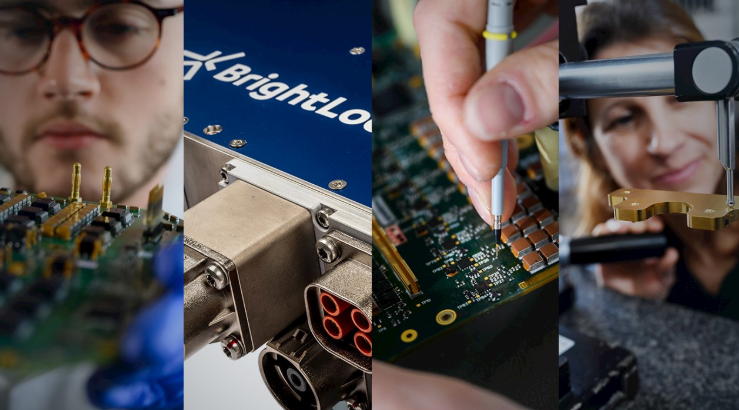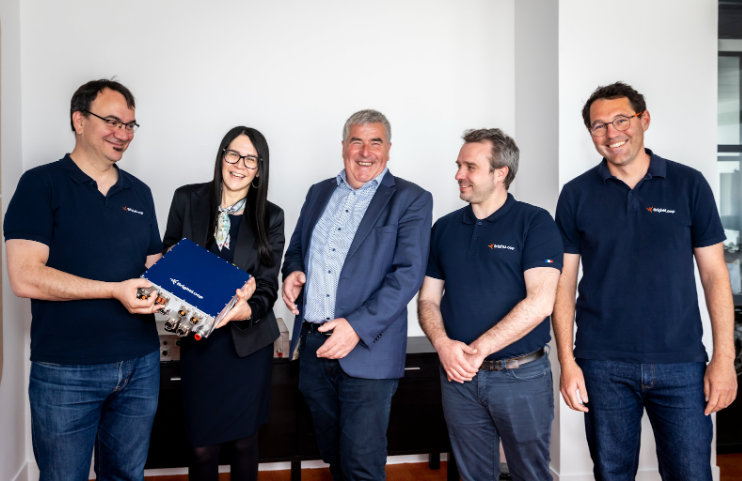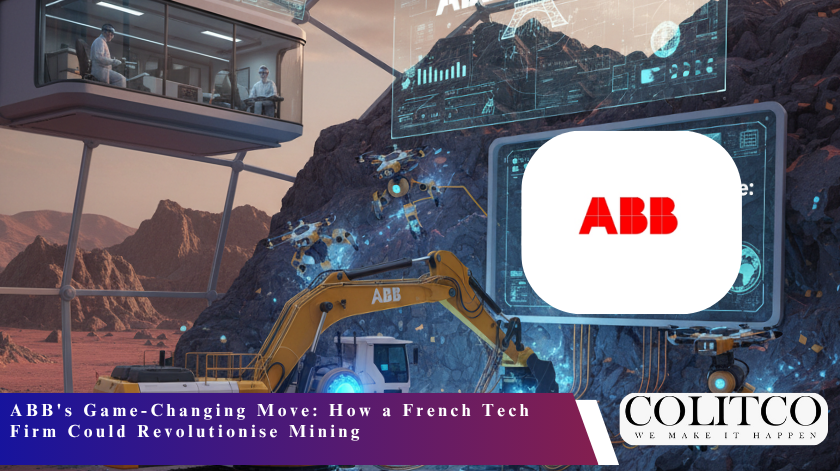Global technology leader ABB has finalised its acquisition of French power electronics specialist Brightloop, marking a watershed moment for mining electrification technology worldwide. The deal, completed on 1 October 2025, positions ABB to accelerate the shift toward zero-emission mining operations across three continents.
ABB secured a 93% controlling stake in Brightloop, with plans to acquire the remaining 7% by 2028. While financial terms remain undisclosed, the strategic implications are enormous for an industry racing to meet ambitious decarbonisation targets.
From Formula E Tracks to Underground Mines
Brightloop’s technology wasn’t born in a laboratory. It was forged on the world’s most demanding electric racing circuit – the ABB FIA Formula E championship.

Brightloop’s compact and efficient converters, born in motorsport, today accelerate electrification in the mining, industrial, and marine sectors.
Every car on the Formula E grid relies on Brightloop’s compact, high-efficiency DC/DC converters to manage extreme power demands. That same battle-tested technology is now being scaled for mining trucks, construction equipment, and offshore vessels.
Founded in Paris in 2010, Brightloop employs around 90 people and generated approximately $24 million AUD in revenue during 2024. The company’s growth trajectory mirrors the broader mining electrification trend sweeping Australia and beyond.
Why Mining Giants Are Watching Closely
Edgar Keller, President of ABB’s Traction division, described the acquisition as “a significant milestone that strengthens our position in the electrification space.”
Brightloop’s modular power converters deliver three critical advantages for mining operations:
- Space efficiency: Compact design suits cramped underground environments
- Harsh environment durability: Built for extreme temperatures and vibration
- Bidirectional power flow: Enables regenerative braking and energy recovery
The technology uses advanced semiconductor materials – silicon carbide and gallium nitride – to achieve power densities that diesel systems simply cannot match.
The Economics Are Compelling
Recent studies show electric mining equipment can reduce operational costs by 56% to 88% compared to diesel-powered alternatives, according to the Electric Mine Consortium’s 2020-2024 report.
These savings come from multiple sources:
- Lower fuel costs (electricity vs diesel)
- Reduced maintenance (fewer moving parts)
- Improved ventilation (less heat and fumes underground)
- Extended equipment lifespan
Australia’s mining sector, which produces 23% of the nation’s carbon emissions, faces mounting pressure to decarbonise. ABB’s expanded capabilities could not have arrived at a better time.
Beyond Mining: Marine and Defence Applications
Brightloop’s technology extends far beyond mining trucks. The company’s portfolio addresses electrification challenges across:
- Marine vessels: Electric ferries and offshore support ships
- Construction equipment: Excavators and loaders
- Aerospace systems: Power management for electric aircraft
- Hydrogen mobility: Fuel cell integration
- Defence platforms: Military vehicle electrification
ABB plans to maintain Brightloop’s engineering and manufacturing operations in France while investing in global expansion.
Florent Liffran, Brightloop’s CEO, expressed enthusiasm about joining forces: “With ABB’s global scale and shared commitment to innovation, we’re looking forward to accelerating our growth and continuing to deliver cutting-edge power electronics to the industries that need them most.”
Market Timing Couldn’t Be Better
The global electric vehicles in mining market is experiencing explosive growth, driven by tightening emissions regulations and corporate sustainability commitments.
Australia’s mining industry accounts for roughly 5-6% of global copper production – a metal essential for electrification infrastructure. Each electric mining truck requires up to five times more copper than conventional vehicles, creating a virtuous cycle of demand.
Major mining companies including Rio Tinto, BHP, and Fortescue are already deploying battery-electric vehicles at scale. Newmont’s Tanami mine plans to operate.
Technical Innovation at the Core
Brightloop’s converters employ a modular architecture that scales from kilowatts to megawatts. This flexibility allows mining operators to electrify everything from light vehicles to 300-tonne haul trucks.
The systems feature:
- N+1 redundancy: Continue operating even if individual modules fail
- Software-defined control: Real-time voltage and current adjustment
- Digital twin technology: Predictive maintenance capabilities
- Thermal management: Advanced cooling for extreme environments
This level of sophistication represents a quantum leap from first-generation electric mining equipment.
What This Means for Investors
ABB’s strategic move signals confidence in long-term electrification trends. The company joins equipment manufacturers like Caterpillar and Epiroc in racing to capture market share in electric mining solutions.

ABB boosts electrification with the acquisition of 93% of BrightLoop
The acquisition also highlights Europe’s growing importance in critical technology supply chains. While China dominates battery cell production, European firms are carving out leadership positions in power electronics and motor systems.
For mining companies evaluating electrification strategies, ABB’s expanded portfolio offers a credible alternative to fragmented solutions from multiple vendors.
Challenges Remain
Despite promising economics, mining electrification faces obstacles:
- Infrastructure investment: Charging stations and grid upgrades required
- Remote location constraints: Many mines lack reliable grid connections
- Battery limitations: Energy density and cycle life in harsh conditions
- Skilled workforce needs: New technology requires training programs
However, as critical minerals demand surges for electric vehicles and renewable energy, mining companies have little choice but to adapt.
Looking Ahead
ABB and Brightloop’s combined expertise positions them to address the $1.2 trillion sustainable energy market projected through 2030.
The integration promises to accelerate development of next-generation mining solutions that are simultaneously cleaner, smarter, and more cost-effective than incumbent diesel technology.
As mining companies worldwide navigate the energy transition, partnerships between established industrial giants and innovative technology specialists will likely determine which firms emerge as leaders in the electrified mining landscape.
Also Read: Costco and Aldi Are Rewriting Australia’s Supermarket Playbook
FAQs
Q: What does ABB’s acquisition of Brightloop mean for Australian mining?
A: The acquisition gives Australian miners access to proven electric vehicle technology that can reduce operational costs by up to 88% while meeting emissions targets. Several major Australian mining companies are already evaluating battery-electric fleets.
Q: How long does it take to electrify a mine?
A: Conversion timelines vary by site, but typically range from 3-7 years for complete fleet electrification. Infrastructure upgrades represent the longest lead-time component, particularly for remote operations requiring grid connections or renewable energy installations.
Q: What are the main benefits of electric mining equipment?
A: Key advantages include: 56-88% lower operating costs, zero direct emissions, reduced heat and noise in underground operations, lower maintenance requirements, and improved worker health and safety conditions.












